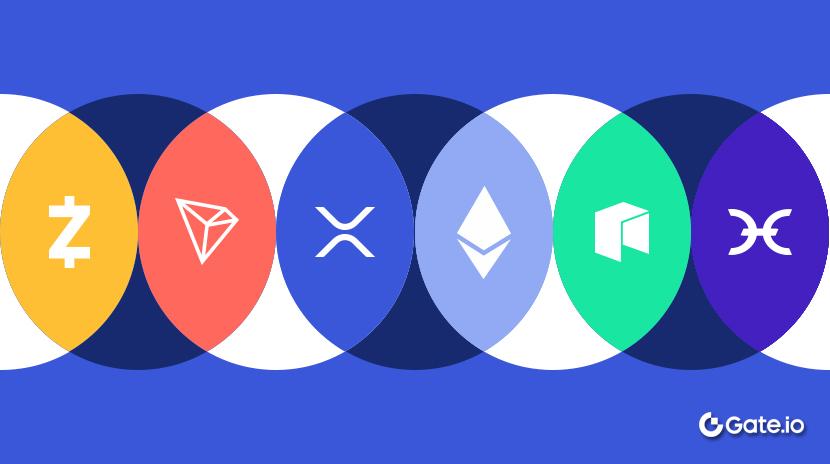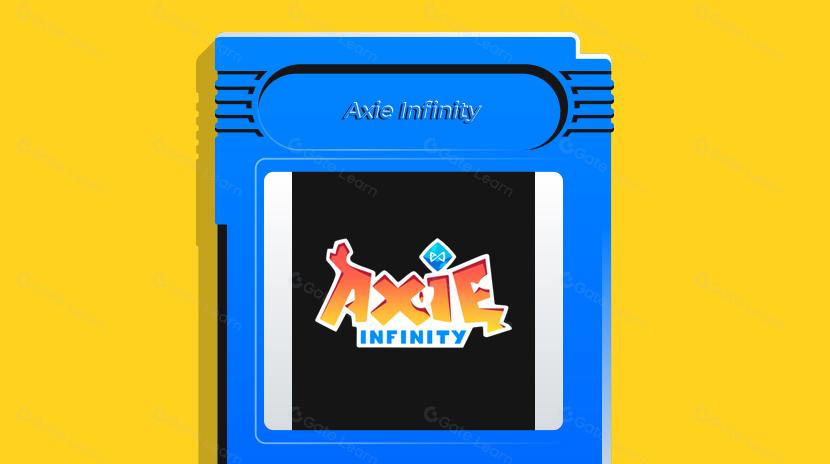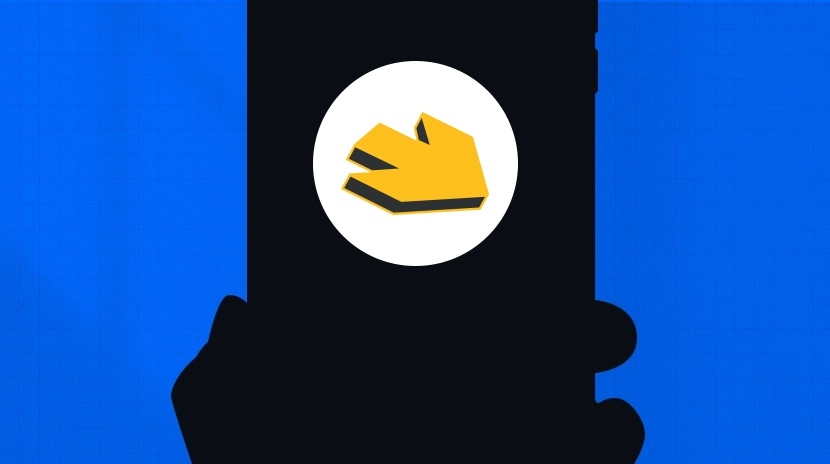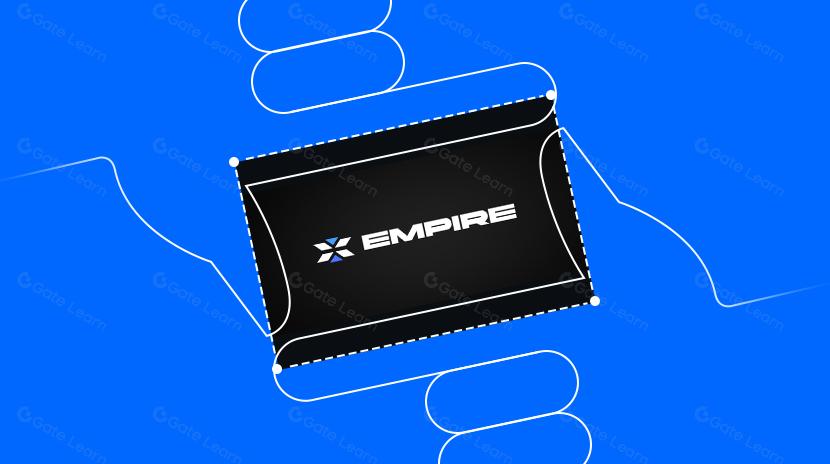GameFi 3.0: من اللعب للكسب إلى تصميم نظام بيئي مستدام
مقدمة
تتألق تكنولوجيا البلوكشين كنجمة براقة في موجة الرقمنة اليوم، تضيء مسارات جديدة عبر الصناعات التقليدية، بما في ذلك الألعاب. يُعتبر GameFi، الجمع بين الألعاب والتمويل، مزيجًا مبتكرًا قد لفت انتباه العالم منذ بدايته، مشعلاً ثورة فريدة من نوعها.
بدأ GameFi 1.0 مع ألعاب البلوكشين التي كانت في الأساس أدوات مالية مغلفة بجماليات اللعبة، مثل CryptoKitties و Gods on Chain. بنى GameFi 2.0 على هذه الأسس، مضيفاً إمكانية اللعب المحسنة، ونماذج اقتصادية أفضل، وحكم DAO (حيث يمكن للمجتمعات التصويت على تطوير اللعبة بناءً على حيازات الرموز، على غرار اجتماعات المساهمين).
مثل ألعاب Axie Infinity و StepN، قادت "نموذج اللعب من أجل الكسب"، مما منح اللاعبين أول تجربة لهم في الكسب من خلال الألعاب. ومع ذلك، مع تطور السوق، أصبحت القيود واضحة: الاقتصادات غير المستقرة، واللعب المحدود، وتراجع استبقاء اللاعبين دفعوا الصناعة إلى استكشاف اتجاهات جديدة.
الآن، عند شروق GameFi 3.0، نحن نشهد أكثر من مجرد ترقية - إنها إعادة تصوير أساسية لكل من المفهوم والتكنولوجيا. يؤكد GameFi 3.0 على تصميم النظام البيئي المستدام، مستهدفًا بناء بيئة ألعاب مزدهرة ومتنوعة حيث تخدم الألعاب ليست فقط كوسيلة ترفيه أو مصادر دخل ولكن كمنصات لخلق القيمة وبناء المجتمع. تعكس هذه التحولات فهم المطورين العميق لتوازن اللعبة واستقرار الاقتصاد وحيوية المجتمع. دعونا نستكشف كيف يكسر GameFi 3.0 القيود التقليدية ويواكب مسارات جديدة لألعاب البلوكتشين.
الجدول الزمني للتطوير
- 2017: إطلاق ألعاب مدمجة بتقنية NFT مثل CryptoKitties، مما يجمع بين السمات المالية للبلوكتشين و NFTs مع اللعب، مما يمثل بداية ألعاب البلوكتشين.
- 2020: يكتسب GameFi أهمية مع إطلاق Axie Infinity، ويضع الأساس لـ GameFi 2.0.
- 2021: تجربة GameFi نموًا متفجرًا، مع نمو نموذج اللعب من أجل الكسب لدي Axie Infinity بشكل كبير. تتجاوز عناوين التطبيقات الخاصة بها DeFi، لتصبح التطبيق الأكثر استخدامًا في تقنية البلوكشين.
بداية عصر GameFi 2.0، مع تحسين اللعب، والتنوع، ودمج العوالم الافتراضية المبكر.
- 2022: تستمر صناعة GameFi في النمو، وتصل إلى ما يقرب من 1،500 مشروع.
- 2023: التطور السريع في تنسيقات الألعاب، بما في ذلك ألعاب الزراعة/التعدين، وألعاب البطاقات، وألعاب الحركة لكسب العملات.
- سوق الواقع المعزز العالمي تجاوز 70 مليار دولار، مع تزايد تكامل تقنيات GameFi للواقع المعزز/الواقع الافتراضي.
- 2024: تطلق SpaceCatch الإصدار التجريبي العام، مع دعم AR والموقع الجغرافي والذكاء الاصطناعي ودعم بلوكتشين وتكامل NFT.
- 2025: يستعد نظام InFinitar لترقية هامة مع إطلاق نظام IGT البيئي، مما قد يعزز GameFi نحو مرحلته القادمة.
مفاهيم أساسية لـ GameFi 3.0
يمثل GameFi 3.0 مرحلة ألعاب سلسلة كتل متقدمة تؤكد على تصميم النظام البيئي المستدام. إنه يجمع بين نماذج اقتصادية محسنة واستراتيجيات تصنيف اللاعبين وابتكارات التفاعل على السلسلة لبناء نظام بيئي للألعاب متنوع وتكاملي يحول الصناعة من الربح على المدى القصير إلى خلق قيمة على المدى الطويل.
بينما بدأت GameFi بنموذج اللعب من أجل الكسب، واجه هذا النهج تحديات الاستقرار الاقتصادي والحفاظ على اللاعبين. مع تطور الصناعة، ظهر GameFi 3.0 مع تصميم نظام بيئي مستدام في صميمه. عدة عوامل رئيسية دفعت هذا التحول:
- استدامة النظام الاقتصادي: في نموذج اللعب من أجل الكسب، يمكن أن تؤدي إنتاجية الرموز الزائدة إلى التضخم والتخفيض، مما يؤثر على استقرار اقتصاد اللعبة وأرباح اللاعبين. وقد دفع هذا الأمر الصناعة إلى السعي لنظم اقتصادية أكثر استقراراً.
- الاحتفاظ باللاعبين على المدى الطويل والحوافز: تكافؤ الفوائد الاقتصادية يصعب على الاحتفاظ باللاعبين على المدى الطويل. يعزز تصميم النظام البيئي المستدام الاحتفاظ من خلال مكافآت متنوعة وتجارب ألعاب غنية.
- حوكمة المجتمع والتعاون: يكتسب اللاعبون مزيدًا من التأثير في حوكمة اللعبة مع تطور الألعاب على البلوكشين. تصميم نظام بيئي مستدام يمنح اللاعبين حقوق حوكمة أكبر ومشاركة أكبر، مما يعزز بناء المجتمع والملكية المشتركة.
- التقدم التكنولوجي وتوسيع التطبيقات: تطور تكنولوجيا البلوكشين يمكن تصميم وتفاعل ألعاب أكثر تعقيدًا، مع الألعاب الكاملة السلسلة وتكنولوجيا البرهان بدون معرفة تعزيز الأمان والشفافية والثقة، مما يوسع حالات استخدام GameFi.
- ضغط التنافس في الصناعة والضغط على الابتكار: تشبع السوق وزيادة التنافسية يدفع المطورين إلى الابتكار لجذب المزيد من المستخدمين. يساعد تصميم النظام البيئي المستدام في خلق تجارب ألعاب فريدة ومزايا تنافسية.
- متطلبات الامتثال التنظيمي: مع تعزيز الرقابة العالمية على ألعاب البلوكشين، يواجه نماذج اللعب من أجل كسب المزيد من التحديات في مجال الامتثال. يساعد التصميم البيئي المستدام الألعاب على التكيف بشكل أفضل مع متطلبات الرقابة الإقليمية المختلفة، مما يحقق تطويرًا ثابتًا على المدى الطويل.
نموذج التداول المزدوج للاقتصاد والمستخدم
نموذج الدورة المزدوجة للاقتصاد والمستخدم هو أساس استدامة GameFi 3.0. يخلق هذا النموذج نظاماً بيئياً متبادلاً من خلال دمج الأنظمة الاقتصادية مع سلوك المستخدم. من خلال الاقتصاديات الرمزية المحسنة واستراتيجيات تصنيف اللاعبين، يعزز GameFi 3.0 كل من الاستقرار المالي وانخراط اللاعبين.
إصدار الرموز وتداولها
الرموز AXS و SLP: باعتبار Axie Infinity مثالاً، يعمل AXS كرمز حوكمة، يتم إصداره من خلال آليات الرهان والحوكمة. يمكن للاعبين شراء AXS لحوكمة اللعبة وتربية Axies. تُكسب الرموز SLP في المقام الأول من خلال مكافآت المعارك داخل اللعبة، حيث يتلقى اللاعبون SLP كمكافأة عند فوزهم في المعارك.

المصدر: https://whitepaper.axieinfinity.com/axs
رمز BIGTIME: في Big Time، تتم إنشاء رموز BIGTIME من خلال اللعب ولا تباع علناً. يمكن للاعبين الحصول على الساعات المتصدعة من خلال الهبات العشوائية في عوالمهم الافتراضية الشخصية، SPACE، والتي يمكن تجهيزها بعد ذلك لإنتاج رموز BIGTIME.

المصدر:https://wiki.bigtime.gg/big-time-economy/economy-overview
فائدة الرمز واستهلاكه
تكاليف التربية: يتطلب تربية Axies كل من رموز SLP و AXS، مع تكاليف متغيرة تعتمد على ندرة Axies ومستواها.
الحكم: تستخدم رموز AXS لحكم اللعبة، مما يسمح للاعبين بالمشاركة في اتخاذ القرارات من خلال الرهان. يظل AXS المرهون مقفلًا لفترة محددة ولا يمكن نقله.
الصياغة وترقية الجلد: يتم استخدام رموز BIGTIME في الصهر والسلاح لتنقيتها وصياغتها وترقية جلود NFT.
رسوم دخول بوابة السمعة: الرموز الكبيرة مطلوبة للوصول إلى بوابات السمعة.
دورة المستخدمين
- استحواذ اللاعبين المجانيين
- مكافآت الاستقبال: يتلقى اللاعبون الجدد المجانيون رموزًا أو معدات أو موارد أخرى لمساعدتهم على البدء بسرعة.
- نظام المهام: مهام يومية غنية وإنجازات مع مكافآت رموز ونقاط تجربة لتعزيز تجربة اللعب.
- المشاركة الاجتماعية: يكسب اللاعبون مكافآت مقابل مشاركة الإنجازات ودعوة الأصدقاء، مما يوسع قاعدة المستخدمين.
- التفاعل مع المجتمع: يكسب اللاعبون مكافآت رمزية صغيرة لمشاهدة الإعلانات داخل اللعبة أو المشاركة في الفعاليات المجتمعية.
- خدمات اللاعبين المميزة
- معدات وجلود متميزة: يمكن للاعبين الذين يدفعون شراء معدات فريدة وجلود وعناصر أخرى لا توفر قيمة عملية فحسب ، بل تعرض أيضا هويتهم وشخصيتهم ، مما يعزز رأس مالهم الاجتماعي داخل اللعبة.
- الميزات الموسعة: تقديم ميزات اللعب الإضافية مثل زيادة سعة الجرد، وفتح وسائط اللعب الخاصة، وتعزيز الصفات الشخصية، مما يمنح اللاعبين المدفوعين ميزات في اللعبة.
- المحتوى الحصري: يمكن للاعبين الدائمين تجربة خرائط وشخصيات جديدة، وغيرها من المحتوى الحصري مبكرًا، والاستمتاع بآخر الميزات مع الحفاظ على النضارة والجاذبية.
- الدعم الأولوي للعملاء: تقديم دعم خدمة العملاء الأسرع والأكثر احترافية لللاعبين المدفوعين، ومعالجة مشاكلهم داخل اللعبة وزيادة الرضا.
- توازن حوكمة لاعب الحوت
- حقوق الحوكمة المدرجة: تم وضع مستويات مختلفة من حقوق الحوكمة استنادًا إلى حيازات الرموز للاعبين ومساهماتهم. بينما يمكن للاعبي الحيتان أن يمتلكوا مزيدًا من قوة التصويت، يجب عليهم أيضًا تحمل مسؤوليات أكبر، مثل تقديم عروض حوكمة أكبر أو المشاركة في المزيد من الأنشطة الحكومية.
- آلية تحقيق التوافق المجتمعي: بالنسبة للقرارات الكبرى، وبعيدًا عن التصويت بالرموز، يجب تنفيذ آليات مثل المناقشات واستطلاعات الرأي في المجتمع للاستفادة الكاملة من آراء واقتراحات اللاعبين العاديين، مما يضمن اتخاذ قرارات ديمقراطية وعادلة.
- عملية حوكمة شفافة: جعل قرارات الحوكمة والنتائج عامة يتيح لجميع اللاعبين فهم عمليات المشروع وخططه المستقبلية، مما يبني الثقة داخل المجتمع.
- تحفيز مشاركة اللاعبين العاديين: تشجيع آليات المكافآت، مثل تقديم مكافآت رمزية أو شارات حصرية للتصويت والمشاركة في الاقتراحات، تشجع اللاعبين العاديين على المشاركة في الحوكمة، مما يزيد من حماسهم وانخراطهم.
ثورة التفاعل على السلسلة
مع زيادة طلب اللاعبين على جودة اللعبة والموثوقية، لا يكفي الإستراتيجية البحتة. ثورة التفاعل على السلسلة البلوكية أصبحت قوة رئيسية تدفع GameFi نحو آفاق جديدة.
تطوير ألعاب مبنية بالكامل على السلسلة
الألعاب الكاملة على السلسلة هي التي تحتوي على جميع منطقها وبياناتها المبنية مباشرة على سلسلة الكتل، مما يضمن الشفافية والعدالة وعدم التغيير. الغابة المظلمة هي مثال بارز، حيث تحقق اللامركزية الحقيقية والتحكم من قبل اللاعبين من خلال تسجيل جميع حالات اللعبة والتفاعلات على سلسلة الكتل.

المصدر: https://dev-guides.zkga.me/
- مزايا:
- الشفافية العالية: يمكن التحقق من جميع بيانات اللعبة والمنطق علنًا، مما يساعد اللاعبين على فهم ميكانيكيات اللعبة والقوانين، وبالتالي بناء الثقة.
- العدالة المحسنة: تضمن منطق اللعبة الثابت أن جميع اللاعبين يتنافسون بموجب نفس القواعد، مما يمنع الغش والاختراقات الشائعة في الألعاب التقليدية.
- حكم ذاتي لللاعب: يمتلك اللاعبون ملكية كاملة وتحكمًا على أصولهم وبياناتهم داخل اللعبة، مما يمكّن التداول الحر والتحويلات مع زيادة التفاعل.
- التحديات:
- قيود الأداء: سرعة المعاملات المحدودة للبلوكشين وسعة التخزين يمكن أن تسبب تأخر في اللعب وتأخير، مما يؤثر على تجربة اللاعب.
- تعقيد التطوير: إنشاء ألعاب كاملة على السلسلة يتطلب خبرة في تكنولوجيا البلوكشين وتطوير الألعاب، مما يزيد من وقت التطوير والتكاليف.
- عقبة دخول عالية: يجب على اللاعبين فهم أساسيات تقنية البلوكشين مثل إدارة المحفظة ورسوم الغاز، مما يخلق منحنى تعلم للاعبين العاديين.
تجربة غير موثوقة من خلال تقنية المعرفة الصفرية
الدلائل بدون معرفة (ZK) هي طرق تشفيرية تتحقق من المعلومات دون الكشف عن البيانات الأساسية. في GameFi، تعزز تكنولوجيا ZK أمان اللعبة وشفافيتها، مما يخلق تجربة لعب لا تعتمد على الثقة.
- تحسين أمان اللعبة: تُتيح البراهين ZK للمطورين التحقق من أصالة بيانات اللاعب دون الوصول إلى المعلومات الخاصة، مما يمنع الغش والاحتيال.
- زيادة ثقة اللاعبين: يمكن للاعبين أن يكونوا واثقين من أن جميع المعاملات والإجراءات داخل اللعبة حقيقية، دون القلق بشأن التلاعب من قبل لاعبين آخرين أو المطورين.
- حماية الخصوصية: أثناء التحقق من البيانات، تقنية ZK تحمي خصوصية اللاعب، مما يسمح بالمشاركة دون الكشف عن المعلومات الحساسة.
في الختام، من خلال الألعاب الكاملة السلسلة وتقنية ZK، تجلب هذه الثورة في التفاعل على السلسلة شفافية، أمان، وموثوقية أكبر لـ GameFi. إنها تخلق بيئة ألعاب عادلة ومنصفة وتعمل كقوة تكنولوجية حاسمة تدفع تطوير GameFi بشكل مستدام.
التحديات والمخاطر
كما هو الحال مع أي تطور تكنولوجي، ليس من السهل أن يكون GameFi بدون تحديات. بينما تفتح هذه الابتكارات إمكانيات جديدة نظريًا، إلا أنها تواجه عقبات كبيرة في التنفيذ العملي.
التحديات التقنية
- مشاكل التوسع: سرعة معالجة المعاملات في شبكات البلوكشين وقدرة التخزين تقيّد العمليات الألعاب بمقياس واسع. على سبيل المثال، تواجه شبكة إيثيريوم تأخرًا كبيرًا ورسومًا عالية أثناء ساعات الذروة، مما يؤثر على تجربة اللاعب. الحلول المحتملة تشمل تقنيات التوسع من الطبقة 2 (مثل Rollups والسلاسل الفرعية) وتحسين رمز العقد الذكي.
عندما تبدأ الألعاب الشهيرة على البلوكشين في الإطلاق، يؤدي تدفق اللاعبين المفاجئ غالبًا إلى ازدحام شبكة إيثيريوم، مما يتسبب في استجابات متأخرة وفشل المعاملات. لمعالجة هذا، بدأ مطورو الألعاب استكشاف حلول الطبقة 2 مثل التكديسات التفاؤلية، نقل بعض معالجة المعاملات إلى شبكات الطبقة الثانية لتحسين أداء اللعبة بشكل كبير وسلاسة.
- مخاوف الأمان: يمكن أن تؤدي ثغرات العقود الذكية والهجمات الخارجية (مثل الاختراق) إلى خسائر في أصول اللاعب وأزمات الثقة. يحتاج المطورون إلى تعزيز التدقيق الرمزي، واختبار الأمان، وتنفيذ آليات التأمين للتخفيف من المخاطر.
على سبيل المثال، في مارس 2022، تم اختراق شبكة البلوكشين Ronin الخاصة بـ Axie Infinity. استغل الهجاج الثغرات في عقد تحقق Ronin، مما أدى إلى سرقة أكثر من 600 مليون دولار من العملات المشفرة، بما في ذلك الإيثيريوم ورموز Axie Infinity. تسبب هذا الحادث في خسائر للاعبين وأضرار خطيرة لثقة اللاعبين والمستثمرين في أمان ألعاب البلوكشين.
التحديات السوقية والتنظيمية
- تقلبات السوق: تقلبات عالية في أسواق العملات المشفرة تؤدي إلى تقلب في أسعار رموز اللعبة غير المستقرة، مما يؤثر على أرباح اللاعبين واستقرار الاقتصاد. يمكن للمشاريع التخفيف من ذلك من خلال نماذج اقتصادية محسّنة وآليات العملات المستقرة.
على سبيل المثال، خلال مايو-يونيو 2021، شهد سوق العملات المشفرة انخفاضا كبيرا. انخفضت عملة SAND التابعة لـ The Sandbox من 5 دولار إلى 3 دولار خلال شهر، وهو انخفاض بنسبة 40٪. وقد أدى هذا إلى هجرة اللاعبين وتقليل النشاط التجاري للأراضي الافتراضية والأصول، مما أدى إلى تعطيل اقتصاد اللعبة.
- مشاكل التكهن: يركز بعض اللاعبين بشكل مفرط على الأرباح على المدى القصير بدلاً من التمتع باللعب، مما يُثير الاضطراب في نظام اللعبة. يحتاج المطورون إلى تصميم آليات تحفيزية أفضل لتشجيع المشاركة على المدى الطويل.
في CryptoKitties، على سبيل المثال، يقوم اللاعبون بتربية كتل كبيرة وتداولها لتحقيق أرباح سريعة، مما أدى إلى تشبع السوق وارتفاع الأسعار. هذا جعل اللعبة غير قابلة للوصول للاعبين المبتدئين وأخل بتوازن النظام البيئي.
- عدم التأكيد التنظيمي: لدى المناطق المختلفة سياسات متباينة بشأن ألعاب البلوكشين والعملات المشفرة، مع تحديثات تنظيمية متكررة. يجب على المشاريع مراقبة التغييرات التنظيمية، وضمان الامتثال، والمشاركة الفعالة في تنظيم الصناعة ذاتياً.
في كوريا الجنوبية، يُنظم تداول الأصول الافتراضية في ألعاب البلوكشين كأوراق مالية، مما يتطلب الامتثال الصارم، بما في ذلك إجراءات معرفة العميل والحفاظ على سجلات المعاملات. بينما تدعم الصين تقنية البلوكشين، إلا أنها تقيّد تداول العملات المشفرة. يجب على ألعاب البلوكشين الدولية التكيف مع التشريعات المحلية عند دخول السوق الكورية، من خلال شراكة مع البنوك المحلية لمعرفة العميل وحفظ الأموال. تشارك هذه المشاريع أيضًا بنشاط في الجمعيات الصناعية لتطوير المعايير وتعزيز تطوير الصناعة بشكل صحي.
يقود الاتحاد الأوروبي تنظيم التشفير العالمي من خلال أسواقه في تنظيم الأصول المشفرة (MiCA). يهدف هذا التشريع إلى توفير إطار موحد وشامل لأصول التشفير في جميع أنحاء الاتحاد الأوروبي ، مما يؤثر بشكل كبير على صناعة العملات المشفرة العالمية. هدف MiCA هو تعزيز ابتكار الأصول المشفرة مع حماية المستثمرين والحفاظ على الاستقرار المالي. على وجه التحديد ، يجب على مزودي خدمات الأصول المشفرة التسجيل في الاتحاد الأوروبي ، والحصول على إذن تنظيمي ، والامتثال لمتطلبات رأس المال ، ومعايير حوكمة الشركات ، وتدابير حماية المستثمرين.

المصدر: Gate.com
النظرة المستقبلية
دمج التكنولوجيا والابتكار
سيتم دمج GameFi بعمق مع التقنيات الناشئة مثل العوالم الافتراضية، والذكاء الاصطناعي، والإنترنت من الأشياء لخلق تجارب ألعاب أكثر غنى وحالات استخدام. على سبيل المثال، ستولد تقنية الذكاء الاصطناعي محتوى لعبة شخصي وشخصيات غير لاعبة ذكية، مما يعزز تشغيل اللعبة والتمتع بها.
في مجال العوالم الافتراضية، مشاريع GameFi مثل The Sandbox وDecentraland بالفعل رائدة في التكامل مع العوالم الافتراضية. يمكن للاعبين شراء وامتلاك أراض افتراضية، مما يولد دخلًا من خلال تطوير وتشغيل مساحاتهم الافتراضية. يتم تنفيذ تقنية الذكاء الاصطناعي على نطاق واسع، مع شخصيات غير لاعبة مدفوعة بالذكاء الاصطناعي تعدل بشكل ديناميكي السرد والحوارات اللعبة استنادًا إلى سلوك اللاعب وتفضيلاته. بالإضافة إلى ذلك، تقنية IoT تفتح احتمالات جديدة من خلال ربط الأجهزة الذكية ودمج البيانات الواقعية في الألعاب، مما يعزز الواقعية والتفاعلية.
التعاون والتطوير في النظام البيئي
تتعاون مشاريع GameFi بشكل متزايد مع مطوري الألعاب التقليدية والشركات التقنية لبناء نظام ألعاب متنوع. من خلال مشاركة الموارد والتعاون التقني والجهود المشتركة في التسويق، تعمل هذه الشراكات على دفع نمو GameFi واعتمادها.
أقام العديد من مشاريع GameFi شراكات مع شركات الألعاب التقليدية والشركات التكنولوجية. على سبيل المثال، تعمل شركات الألعاب بتقنية البلوكشين مع Unity ومحرك Unreal لتعزيز أداء اللعبة وجودة الرسومات. في هذه الأثناء، تتعاون مشاريع GameFi أيضاً لمشاركة موارد المستخدم والمنصات التقنية، مما يخلق مواقف رابحة للجميع. يمكن أن تعمل العديد من الألعاب بتقنية البلوكشين على نفس المنصة، مشتركة في قواعد المستخدمين والأنظمة الاقتصادية لتقليل تكاليف التطوير والتسويق. بالإضافة إلى ذلك، تدخل شركات التكنولوجيا الكبرى مثل Google وAmazon في مجال GameFi، وتوفر خدمات السحابة والدعم التقني.
التوحيد والتنظيم
تعمل GameFi على وضع معايير تقنية وإرشادات صناعية وأطر تنظيمية لتعزيز نمو السوق بصورة صحية مع نضوج الصناعة. وهذا يزيد من شفافية المشروع ومصداقيته، مما يجذب المستثمرين التقليديين واللاعبين.
من أجل المعايير التقنية، تعمل منظمات مثل مؤسسة إيثريوم وهايبرليدجر على تأسيس بروتوكولات سلسلة الكتل الموحدة، مضمونة التوافق والتفاعلية بين منصات مختلفة.
بالنسبة للإرشادات الصناعية، تقوم منظمات مثل تحالف البلوكشين للألعاب بوضع أفضل الممارسات لتطوير الألعاب والعمليات، لحماية مصالح اللاعبين.
في الجبهة التنظيمية، تستكشف الحكومات في جميع أنحاء العالم أطرًا مناسبة لـ GameFi. على سبيل المثال، تتطلب الهيئات المالية الكورية الجنوبية إجراءات صارمة لمعرفة العميل ومكافحة غسيل الأموال لمشاريع الألعاب على البلوكشين. تسهم هذه الجهود في تحسين جودة المشروع ومصداقيته، مما يرسخ الأسس لنمو الصناعة على المدى الطويل.
استنتاج
تطورت GameFi بشكل كبير من أصولها كأداة مالية في 1.0 ، من خلال حوكمة المجتمع في 2.0 ، إلى تصميم النظام البيئي المستدام اليوم في 3.0. يركز GameFi 3.0 على بناء نظام بيئي متنوع وتكافلي للألعاب من خلال النماذج الاقتصادية المحسنة واستراتيجيات التقسيم الطبقي للاعبين وابتكارات التفاعل على السلسلة. بالانتقال إلى ما هو أبعد من آليات "اللعب من أجل الكسب" البسيطة ، فإنه يركز على الاستقرار الاقتصادي ، والاحتفاظ باللاعبين على المدى الطويل ، والتنمية التي يحركها المجتمع. على الرغم من مواجهة التحديات الفنية والسوقية والتنظيمية ، فإن GameFi 3.0 تستعد لمستقبل أكثر استدامة وازدهارا من خلال التكامل التكنولوجي والتعاون في النظام البيئي والتوحيد القياسي.
المقالات ذات الصلة

ما المقصود بالتحليل الأساسي؟

ما هي العملات البديلة؟

ما هو أكسي إنفينيتي؟

ما هو محفظة HOT على تليجرام؟

